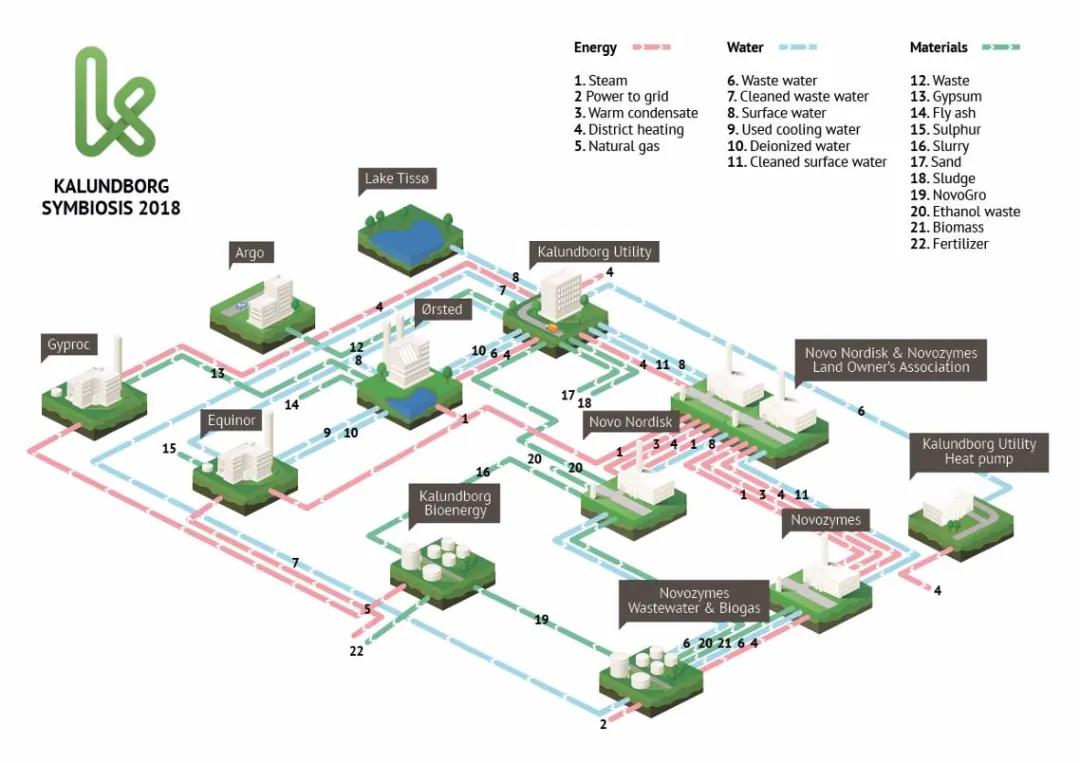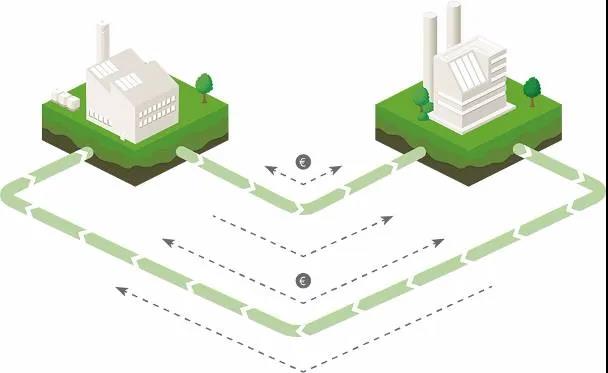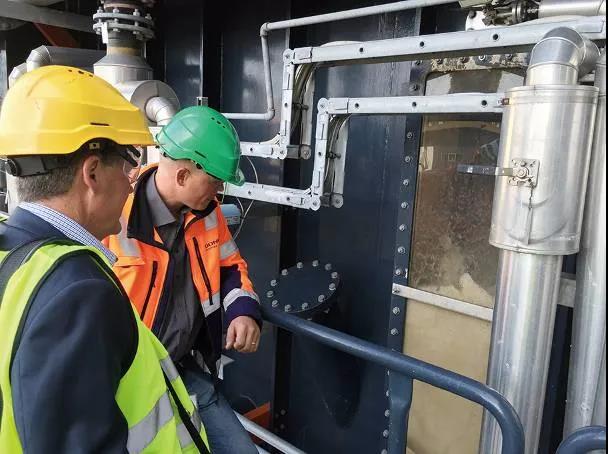


Committed to Sustainable Cities and Human Settlements for All

In Special Consultative Status with ECOSOC
Abstract:What is exemplified in Kalundborg Symbiosis is how industry can be part of the solution to ensuring a more sustainable society and it is a demonstration of the decoupling of economic growth from natural resource use. It is a strong example of combining efforts within water, energy and materials across sectors in order to achieve a multiplying effect. The Symbiosis creates growth in the local area and supports the companies' corporate social responsibility strategy and climate change mitigation. Therefore, the Symbiosis was awarded the “Global Green Park” of the Sustainable Cities and Human Settlements Awards 2018 (SCAHSA 2018). The appraisal committee put emphasis on Kalundborg Symbiosis being a pioneer and best practice example of a circular and resilient economy, and demonstrates a successful implementation of public-private partnerships.
Keywords: symbiosis, green transition, resource exchange, sustainability, public-private partnerships

Kalundborg aerial photography
Kalundborg Symbiosis is a partnership between public and private companies in Kalundborg, Denmark, that are working together to solve some of the challenges we face today. In 1961, issues of water scarcity were the initiating factor of a collaboration that still inspires stakeholders across the world to think more circular and act sustainably. What happened in Kalundborg was the need to collaborate to find alternative sources of water as the ground water resource did not meet demand. On this basis, the first real symbiotic exchange was initiated in 1972.

Schematic diagram of resource recycling in the Kalundborg Symbiosis
Since then, Kalundborg Symbiosis has developed the world's first industrial symbiosis with a circular approach to production. The main principle is that a residue from one company becomes a resource at another, benefiting both the environment and the economy. Kalundborg Symbiosis has evolved organically over the past six decades, with joint projects being created where the business case and collaboration was beneficial but ending when the business case became unfavorable
Collaboration between the partners is now second nature and every new decision in each company will consider the possibilities for and impact on the other partners and the Kalundborg Symbiosis as a whole. This mindset is strengthened by shared values and aided by the fact that none of the companies are in direct competition.
What is exemplified in Kalundborg is how industry can be part of the solution to ensuring a more sustainable society and it is a demonstration of the decoupling of economic growth from natural resource use. It is a strong example of combining efforts within water, energy and materials across sectors in order to achieve a multiplying effect. The Symbiosis is constantly evolving while maintaining a strong focus on sustainability by exchanging residual materials, water and energy. Thus, the Symbiosis creates growth in the local area and supports the companies' corporate social responsibility strategy and climate change mitigation. Working in partnerships is our approach to accelerating green transition.

Mr. Choudhury Mohanty, Coordinator of Environment Programme, UNCRD/UN DESA, presented the award of “Global Green Park” to Kalundborg Symbiosis, Denmark, October 2018, UN Conference Center, Bangkok, Thailand @ GFHS
Today, more than 20 different resources are exchanged in Kalundborg Symbiosis resulting in both environmental and financial savings. Based on a life cycle assessment of all existing flows in 2015, we can confidently say that Kalundborg Symbiosis offers both financial and environmental benefits. Every year the combined savings for the partners are:
• Bottom-line savings of 28 million USD
• 16.5 million USD in socio-economic savings
• 635,000 tons of CO2
• 3.6 million m3 water
• 100 GWh of energy
• 87,000 tons of material
In other words, the enterprises can leverage competitive power as a result of the interconnectivity, while the public sector can save money, for instance on investments in waste management. For the community, this means maintaining and creating local jobs by keeping production facilities localized.

Symbiose icon
The future of Kalundborg Symbiosis
Since 1996, collaborations have been formalized and today "Kalundborg Symbiosis" functions as a non-profit organization in which all partners have a member on the board. At board meetings, we set strategic goals to fulfill our vision and create sustainable development through long-term responsible use of resources, in balance with economic, environmental and social considerations. This partnership is built on a level of trust, confidentiality, openness, equality and cooperation far beyond what is normally expected between private and public organizations. It is an innovative way of working together to foster transformative change. Due to our close partnership, we have accelerated green transition in Kalundborg and have the opportunity to carry out joint projects such as our current energy efficiency initiatives. The partners trust they can share challenges with each other and find shared solutions that create value for all parties involved.
To maintain its position as a pioneer within the field of sustainability, Kalundborg Symbiosis has developed an ambitious plan in which it was decided that the partners would implement at least ten new projects by 2025. We have already started three, so that bodes well for the future of the symbiosis.
Our mission is to create sustainable development in our companies through joint projects. By sustainability we understand the long-term responsible use of resources, in balance with economic, environmental and social considerations. We have set the following strategic goals to fulfill our vision:
1. Full resource utilization: the water, energy and material flows from the partners are all included in the symbiosis.
Through a systematic approach to the parties’ flows, we will select the greatest potentials and initiate new projects that will ensure continued resource optimization.
Our ambition is 10 fully implemented projects by 2025.
2. Strengthening the partnership: develop and anchor the local symbiotic mindset.
We will continuously identify and attract new members to establish new flows, we will involve and convey contact with external parties, such as universities and visitors, seek inspiration through presentation, visits and study tours, as well as actively support a practical engineering knowledge environment.
Our ambition is an open and value-creating network in the form of an active board and / or sub-groups.
3. Sharing of the symbiotic mindset: inspire others to be part of a symbiosis.
We will support the Symbiosis Center Denmark’s communication and dissemination of industrial symbiosis, documenting societal, environmental and economic value as well as facilitating new symbiosis collaborations locally as well as nationally.
Our ambition is to maintain Kalundborg as the center for knowledge of industrial symbiosis with a practice-oriented approach

Industrial symbiosis beyond Kalundborg
We will lead by example and aim to convey the sum of our experiences beyond Denmark's borders in order to accelerate green transition internationally for the benefit of business and society. Specifically, we aim to accentuate how Kalundborg Symbiosis continues to be relevant by being demand-driven and allowing bottom-up development of projects.
One way in which we work to inspire others to be part of an industrial symbiosis is through one of the numerous symbiotic projects carried out by Symbiosis Center Denmark. In the project Urban Baltic Industrial Symbiosis (UBIS), funded by Interreg South Baltic, partners across Denmark, Germany, Sweden, Poland and Lithuania are working together to create new industrial symbiosis projects and develop tools which will facilitate the development of industrial symbioses beyond the partnership.
In project UBIS, Symbiosis Center Denmark are contributing with the lessons learned from Kalundborg Symbiosis for the benefit of the Baltic region. The project focuses on cross-border experience exchange, critical to success due to the differences in experiences and knowledge of symbiosis in the Baltic area. All partners can learn from each other by understanding the different situations in countries around the South Baltic. In this way, Kalundborg Symbiosis functions as a concrete example of the practical and technical solutions to ensuring a more sustainable use of resources. Simultaneously, Kalundborg Symbiosis can learn from international partners and ensure the continued development of the symbiosis. We believe that it is a prerequisite to sustainable development to work together across countries, cultures and sectors.
Kalundborg Symbiosis - green transition in partnerships
Achieving sustainable development requires the partnership of governments, private sector, civil society and citizens alike, according to the United Nations Sustainable Development Goals. Through its pioneering efforts within the field of sustainability, Kalundborg Symbiosis demonstrates the role businesses can play in connecting government, industry and citizens to make sure we leave a better planet for future generations. By systematically working to find solutions to current sustainability challenges, businesses in an industrial symbiosis engage citizens and civil society while furthering green transition in their own production. As a well-established public-private partnership, Kalundborg Symbiosis has thus shown the way for many other industrial clusters.
What we do is to lead by example and demonstrate that green transition in partnerships is a viable and commercially valid approach. Kalundborg Symbiosis essentially functions as a test-bed for sustainable production and it shares its key drivers with the world.
Copyright © Global Forum on Human Settlements (GFHS)
